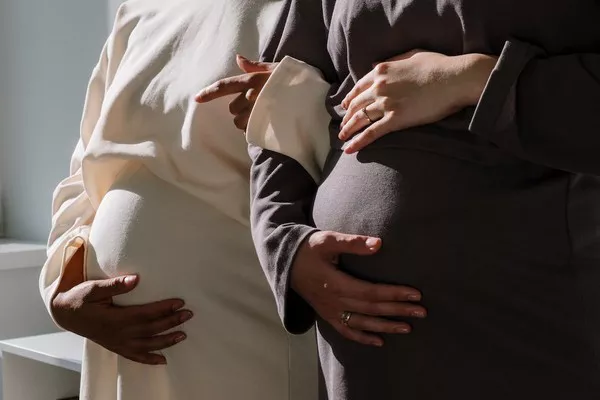Understanding your fertility and menstrual cycle is essential for family planning, whether you’re trying to conceive or aiming to avoid pregnancy. One crucial aspect of this understanding is knowing when you are fertile after menstruation. In this comprehensive guide, we will explore the factors that influence your fertile window and how to track it effectively.
The Menstrual Cycle and Fertility
To comprehend when you are fertile after menstruation, you must first grasp the basics of the menstrual cycle. The menstrual cycle is divided into several phases, with each phase playing a unique role in fertility:
Menstruation: The cycle begins with menstruation, typically lasting 3-7 days. During this phase, your body sheds the uterine lining that built up in the previous cycle.
Follicular Phase: After menstruation, the follicular phase begins. It varies in length but usually lasts from 7 to 21 days. During this phase, follicle-stimulating hormone (FSH) prompts your ovaries to develop follicles, each containing an immature egg.
Ovulation: Ovulation is the key event in your menstrual cycle. It usually occurs around the midpoint of your cycle, but this can vary. During ovulation, a mature egg is released from the ovary and travels into the fallopian tube, where it can potentially be fertilized by sperm.
Luteal Phase: Following ovulation, the luteal phase begins and typically lasts 10-16 days. During this phase, the empty follicle transforms into a structure called the corpus luteum, which produces progesterone. Progesterone prepares the uterine lining for potential implantation of a fertilized egg.
Understanding Your Fertile Window
Your fertile window refers to the days during your menstrual cycle when pregnancy is most likely if you engage in unprotected intercourse. While the window can vary from person to person, it typically includes the days leading up to and including ovulation. However, sperm can survive in the female reproductive tract for up to five days, which extends the fertile window.
Here’s a breakdown of the fertile window:
Leading Up to Ovulation: Sperm can live inside your body for several days, so even if you have intercourse a few days before ovulation, there is a chance sperm will be available when the egg is released.
Day of Ovulation: Ovulation is a crucial day within the fertile window. If sperm is present when the egg is released, fertilization can occur.
Post-Ovulation: The egg survives for about 12-24 hours after release. So, if you ovulate on a particular day, you are fertile for that day and potentially the following day. After that, the egg disintegrates, and your fertile window closes.
Tracking Your Fertility
Several methods can help you track your fertile window and identify when you are fertile after menstruation:
Calendar Method: This involves tracking your menstrual cycle over several months to estimate when you are likely to ovulate. However, it may not be highly accurate, especially if your cycles are irregular.
Basal Body Temperature (BBT) Charting: BBT charting involves taking your temperature each morning before getting out of bed. Your BBT typically rises slightly after ovulation, indicating that you have already ovulated. This method helps confirm ovulation but doesn’t predict it in advance.
Cervical Mucus Monitoring: Changes in cervical mucus consistency can signal your fertile window. As you approach ovulation, cervical mucus becomes clear, slippery, and stretchy – similar to egg whites. This is fertile cervical mucus, designed to help sperm reach the egg.
Ovulation Predictor Kits (OPKs): These kits detect a surge in luteinizing hormone (LH) that occurs 24-48 hours before ovulation. When the OPK indicates a surge, it suggests that ovulation is imminent.
Fertility Awareness-Based Methods (FAMs): FAMs combine various tracking techniques, such as BBT charting, cervical mucus monitoring, and calendar tracking, to predict your fertile window more accurately.
Mobile Apps and Wearable Devices: Many mobile apps and wearable devices are available to help track your menstrual cycle and predict fertile days. They often combine multiple methods for more precise predictions.
Factors Affecting Fertility and the Fertile Window
It’s crucial to note that fertility can be influenced by various factors, and the fertile window is not static. Here are some factors that can affect your fertility and the timing of your fertile window:
Cycle Regularity: Women with irregular menstrual cycles may have unpredictable fertile windows. Tracking methods may be less accurate in such cases.
Stress and Illness: Stress and illness can disrupt your hormonal balance, potentially affecting ovulation and the timing of your fertile window.
Age: Fertility declines as you get older, and the fertile window may become shorter. Women are most fertile in their twenties and early thirties.
Medications and Hormonal Imbalances: Certain medications and hormonal imbalances can affect ovulation and fertility.
Lifestyle Factors: Smoking, excessive alcohol consumption, and being underweight or overweight can impact fertility and the timing of your fertile window.
Conclusion
Understanding your fertile window is crucial for informed family planning. By tracking your menstrual cycle and using reliable methods, you can identify when you are fertile after menstruation. Keep in mind that fertility is influenced by various factors, and it may vary from person to person. If you’re trying to conceive or prevent pregnancy, consulting with a healthcare provider can help you make informed decisions and maximize your chances of achieving your reproductive goals.


